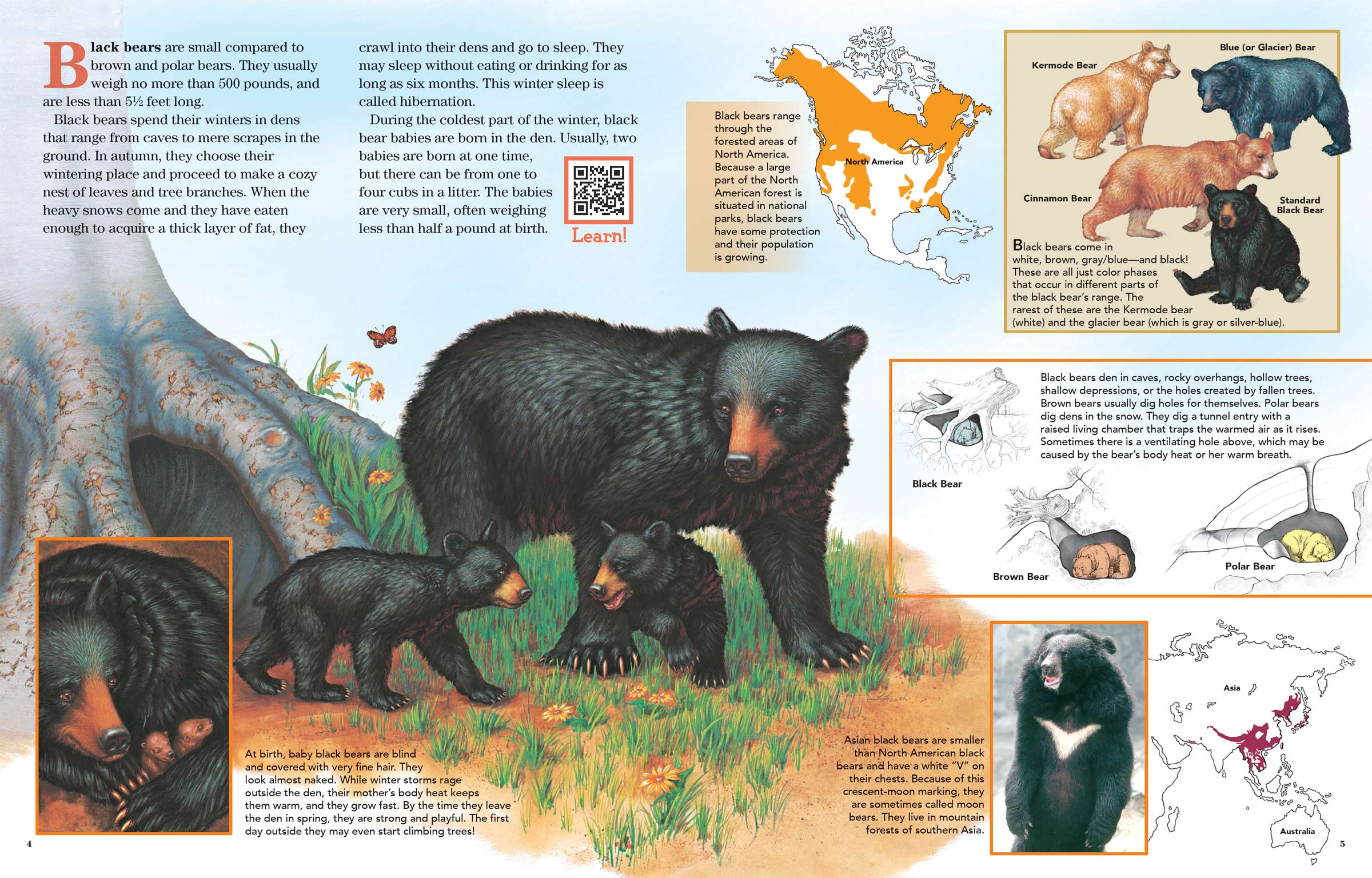
Black Bears
ByBlack bears are small compared to brown and polar bears. They usually weigh no more than 500 pounds, and are less than 5½ feet long.
Black bears spend their winters in dens that range from caves to mere scrapes in the ground. In autumn, they choose their wintering place and proceed to make a cozy nest of leaves and tree branches. When the heavy snows come and they have eaten enough to acquire a thick layer of fat, they crawl into their dens and go to sleep. They may sleep without eating or drinking for as long as six months. This winter sleep is called hibernation.
During the coldest part of the winter, black bear babies are born in the den. Usually, two babies are born at one time, but there can be from one to four cubs in a litter. The babies are very small, often weighing less than half a pound at birth.
 At birth, baby black bears are blind and covered with very fine hair. They look almost naked. While winter storms rage outside the den, their mother’s body heat keeps them warm, and they grow fast. By the time they leave the den in spring, they are strong and playful. The first day outside they may even start climbing trees!
At birth, baby black bears are blind and covered with very fine hair. They look almost naked. While winter storms rage outside the den, their mother’s body heat keeps them warm, and they grow fast. By the time they leave the den in spring, they are strong and playful. The first day outside they may even start climbing trees!
Black bears range through the forested areas of North America. Because a large part of the North American forest is situated in national parks, black bears have some protection and their population is growing.
Black bears come in white, brown, gray/blue—and black! These are all just color phases that occur in different parts of the black bear’s range. The rarest of these are the Kermode bear (white) and the glacier bear (which is gray or silver-blue).
Black bears den in caves, rocky overhangs, hollow trees, shallow depressions, or the holes created by fallen trees. Brown bears usually dig holes for themselves. Polar bears dig dens in the snow. They dig a tunnel entry with a raised living chamber that traps the warmed air as it rises. Sometimes there is a ventilating hole above, which may be caused by the bear’s body heat or her warm breath.
Asian black bears are smaller than North American black bears and have a white “V” on their chests. Because of this crescent-moon marking, they are sometimes called moon bears. They live in mountain forests of southern Asia.

